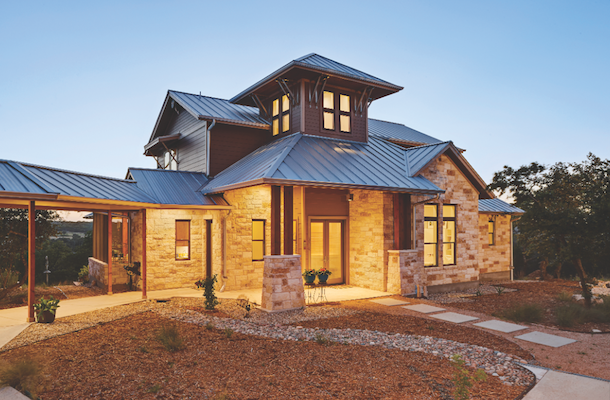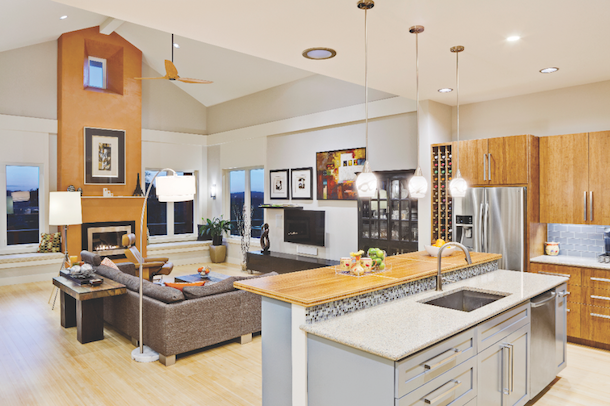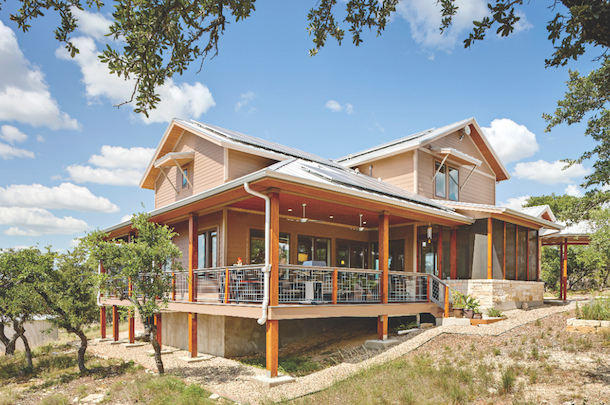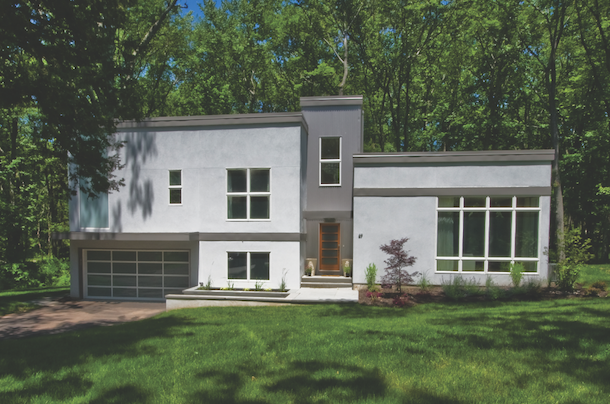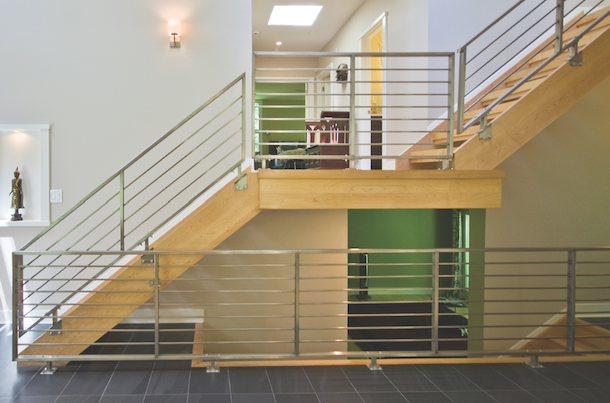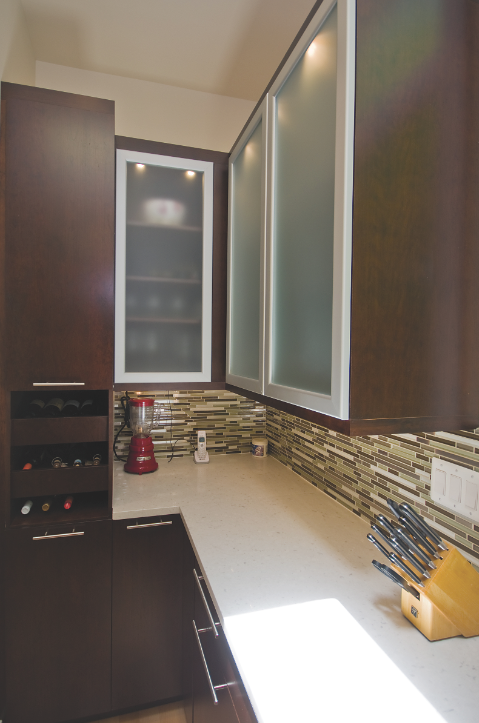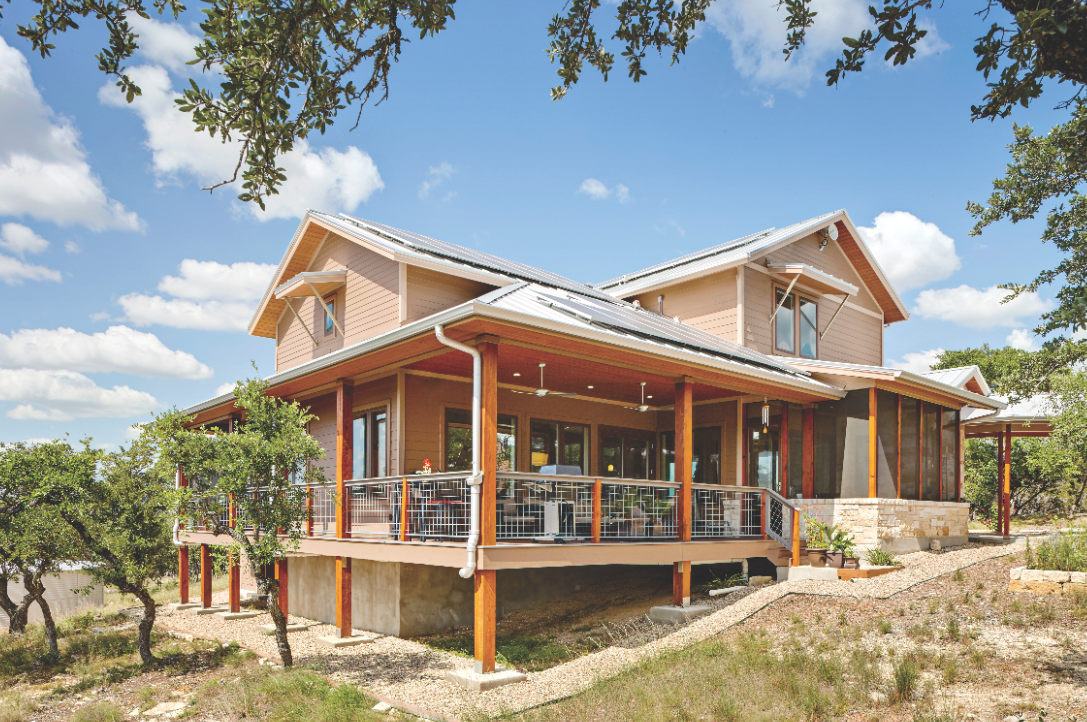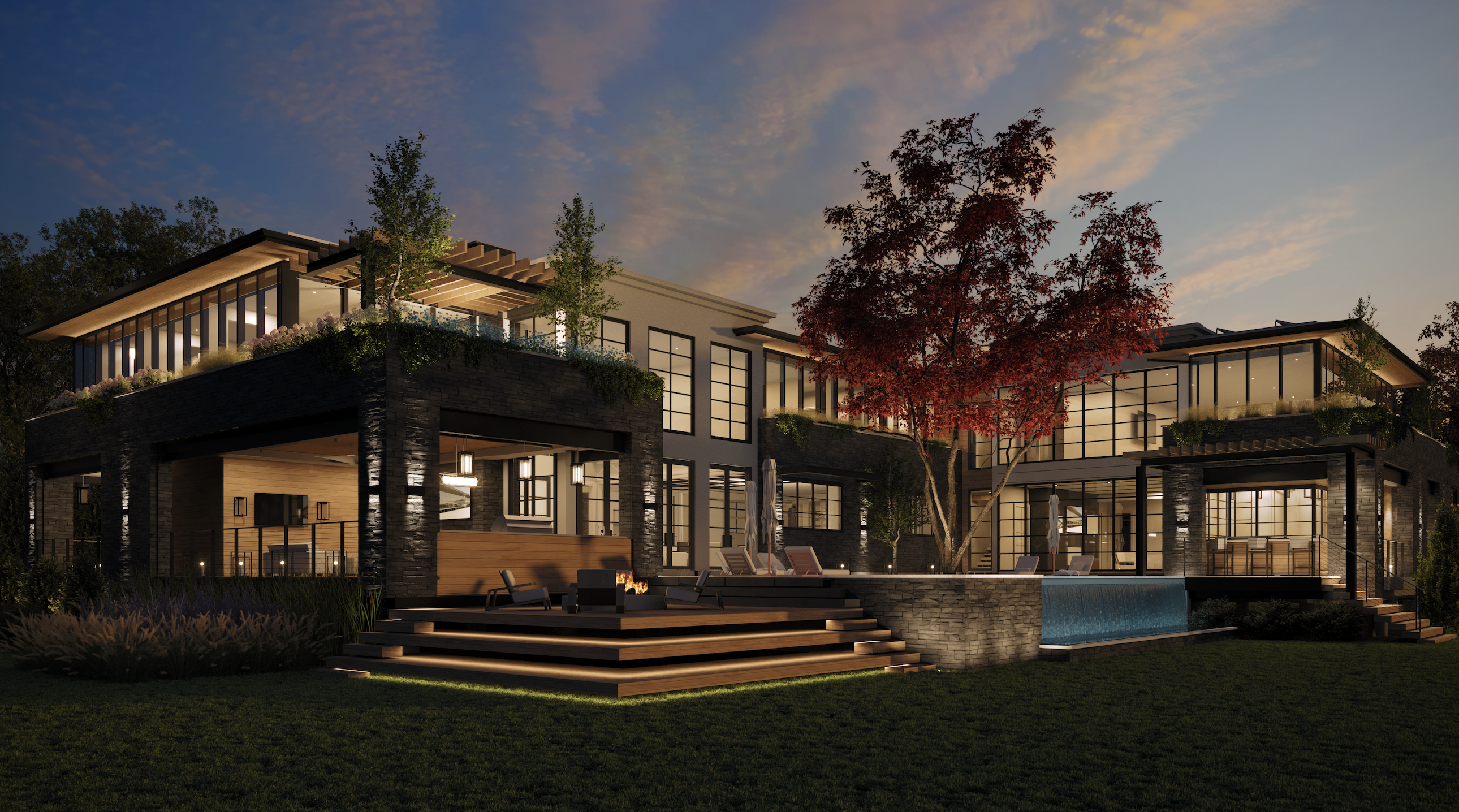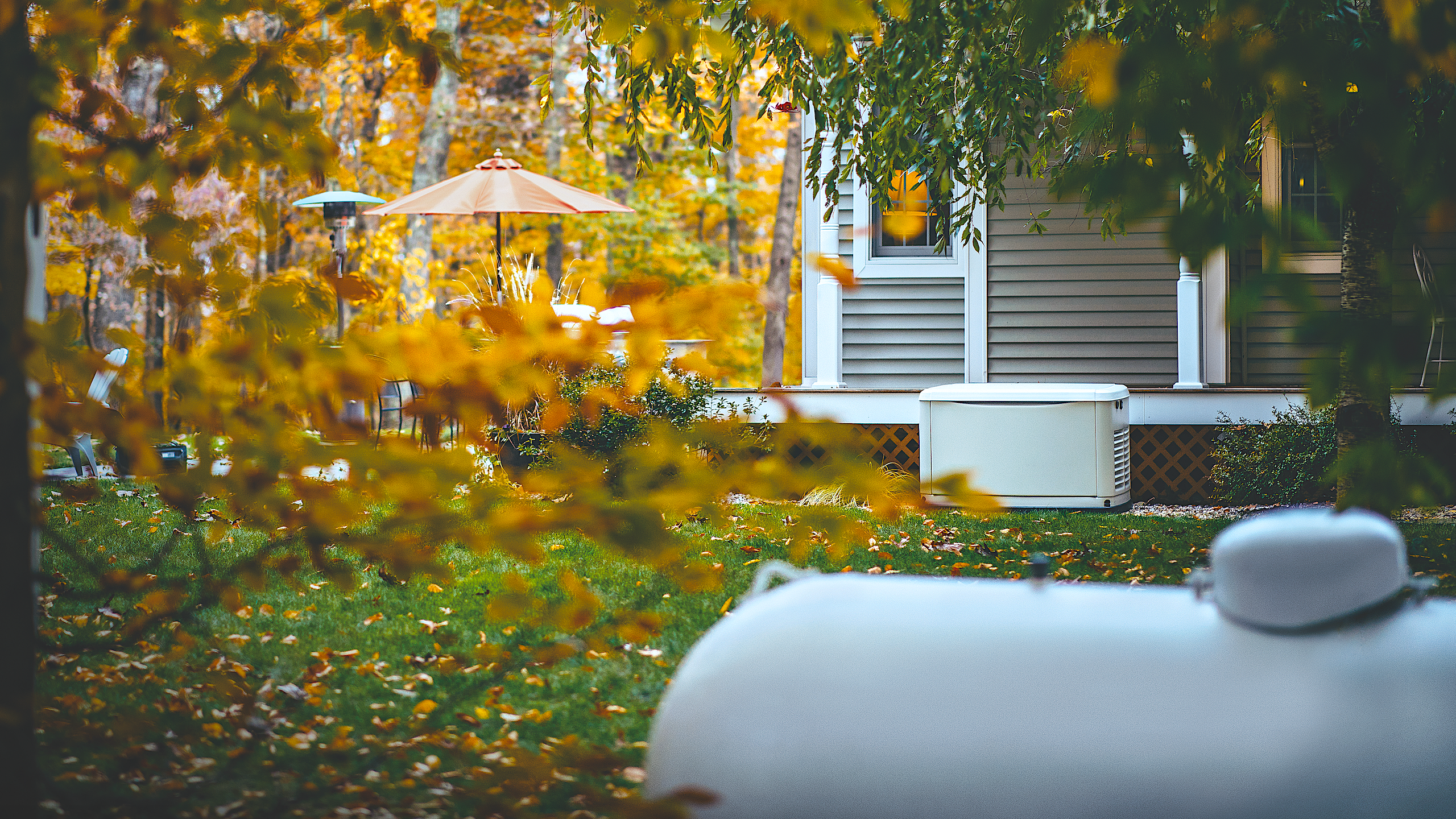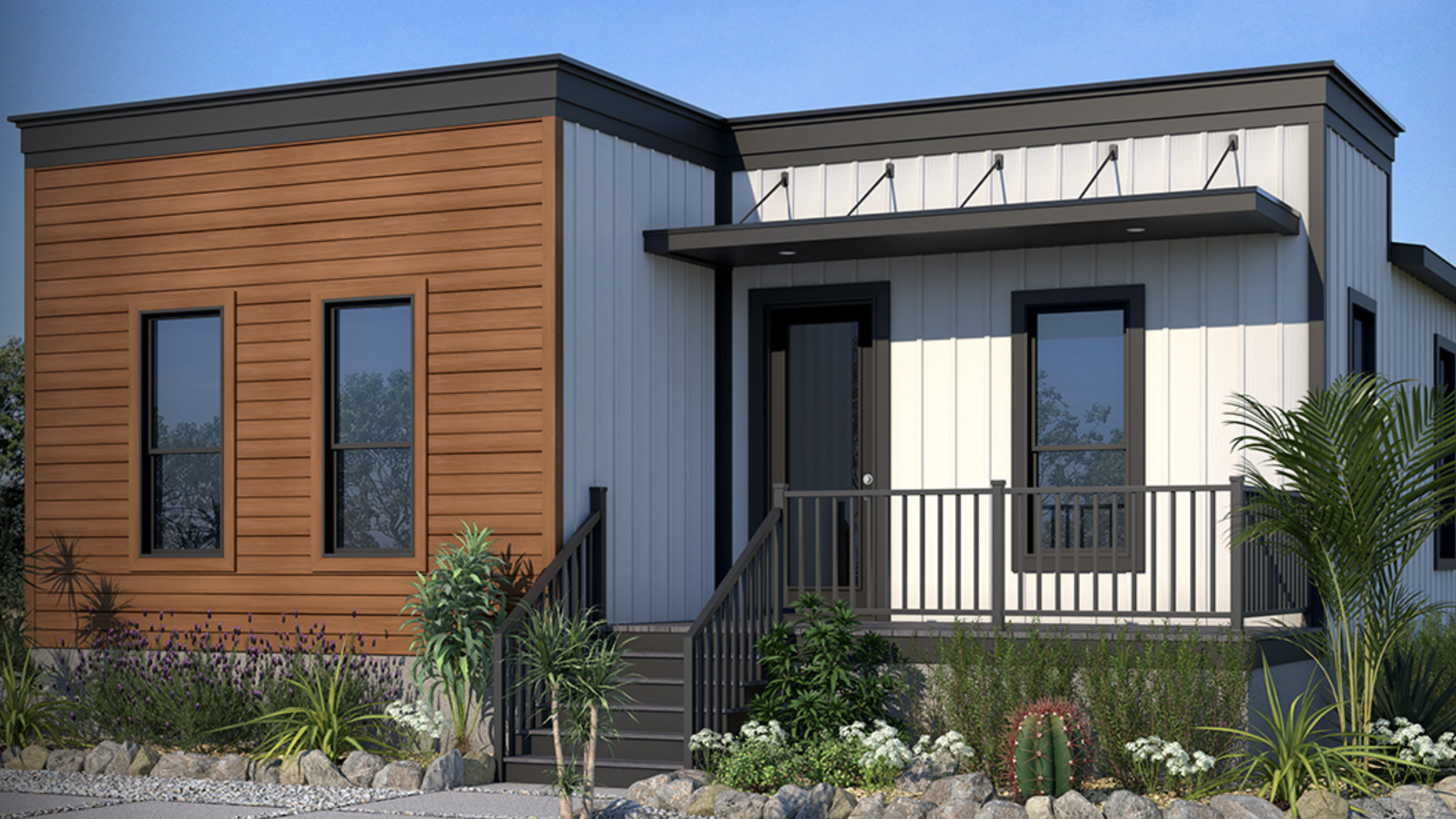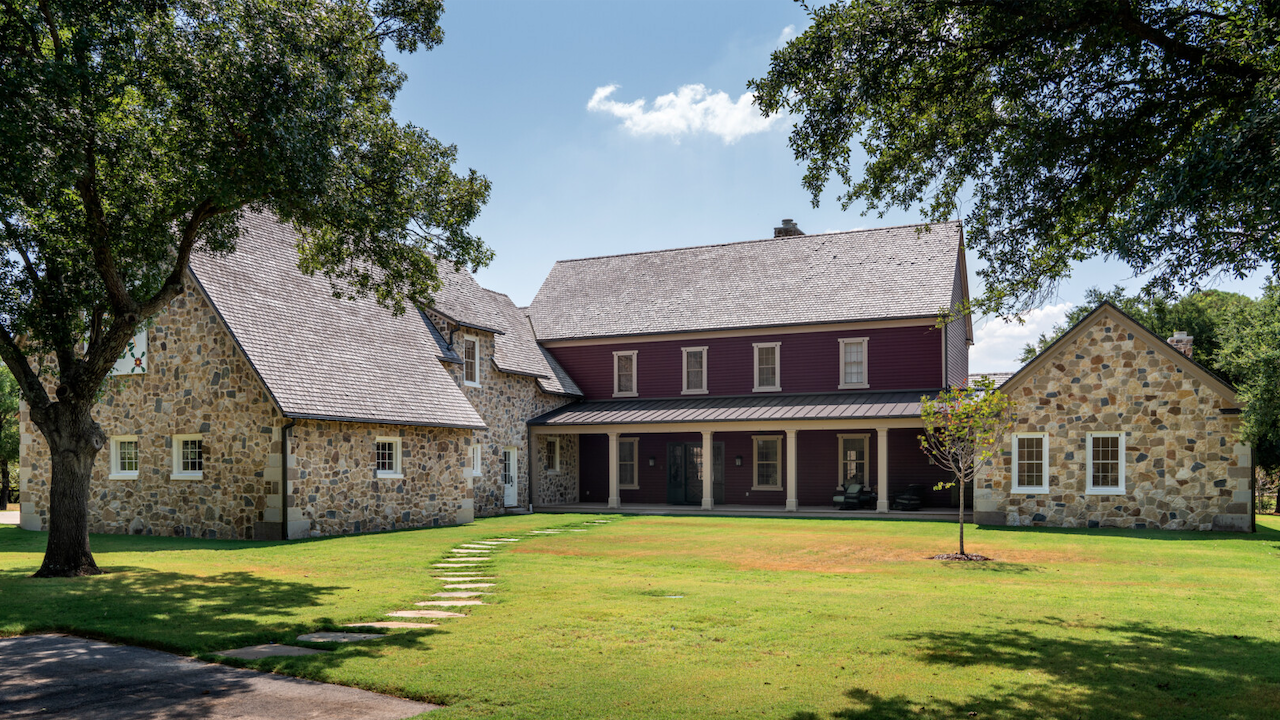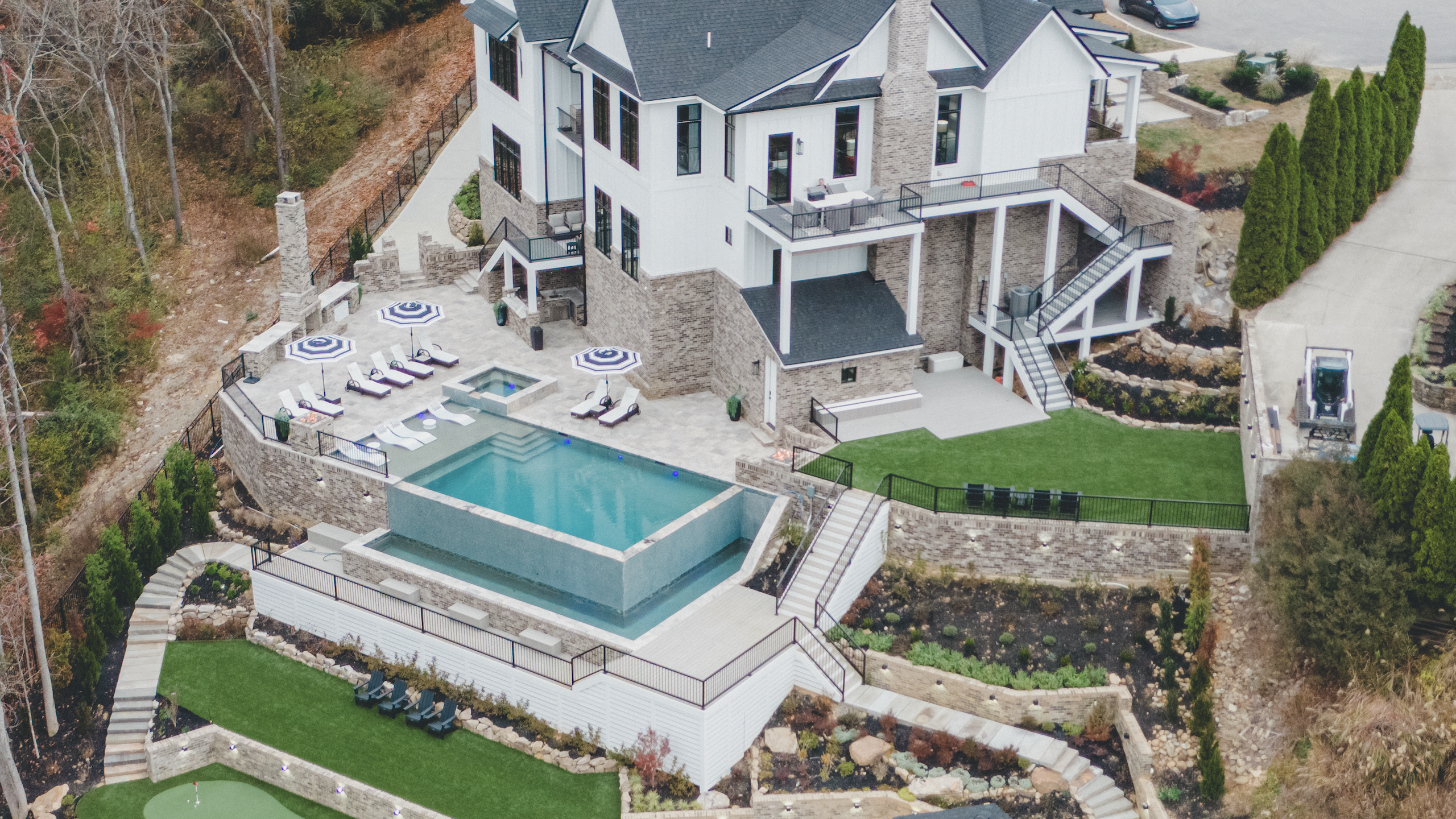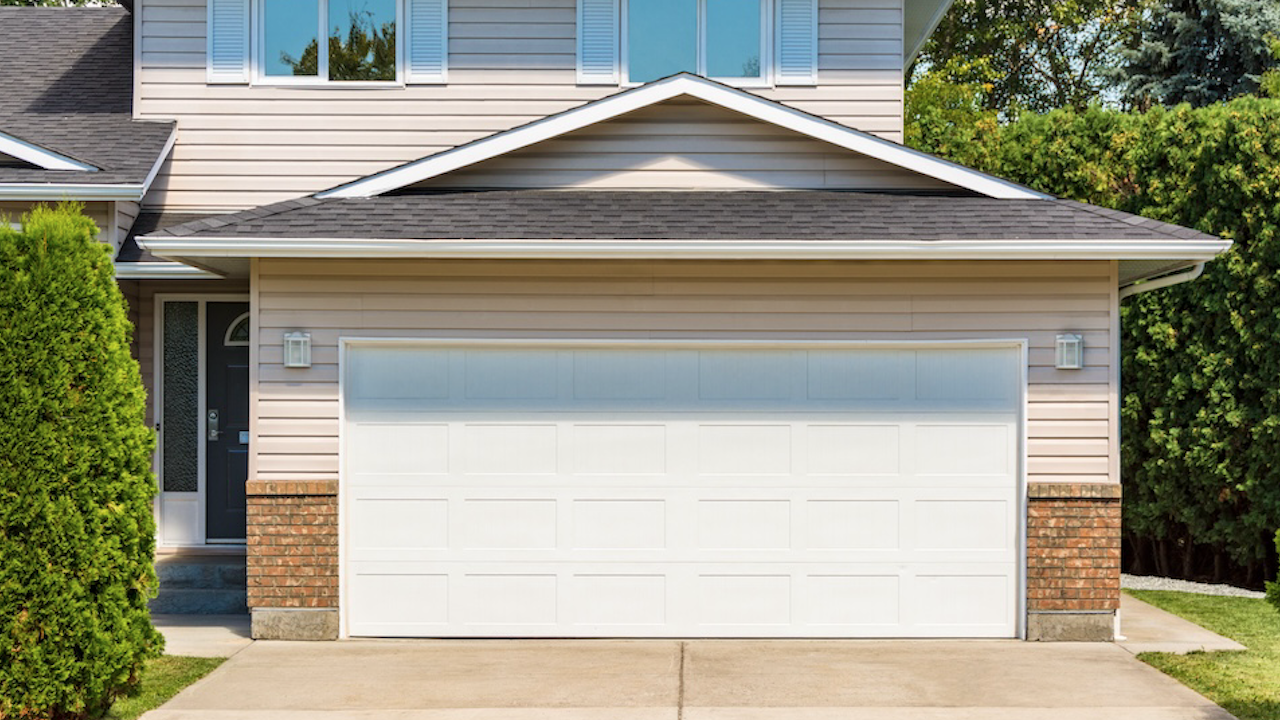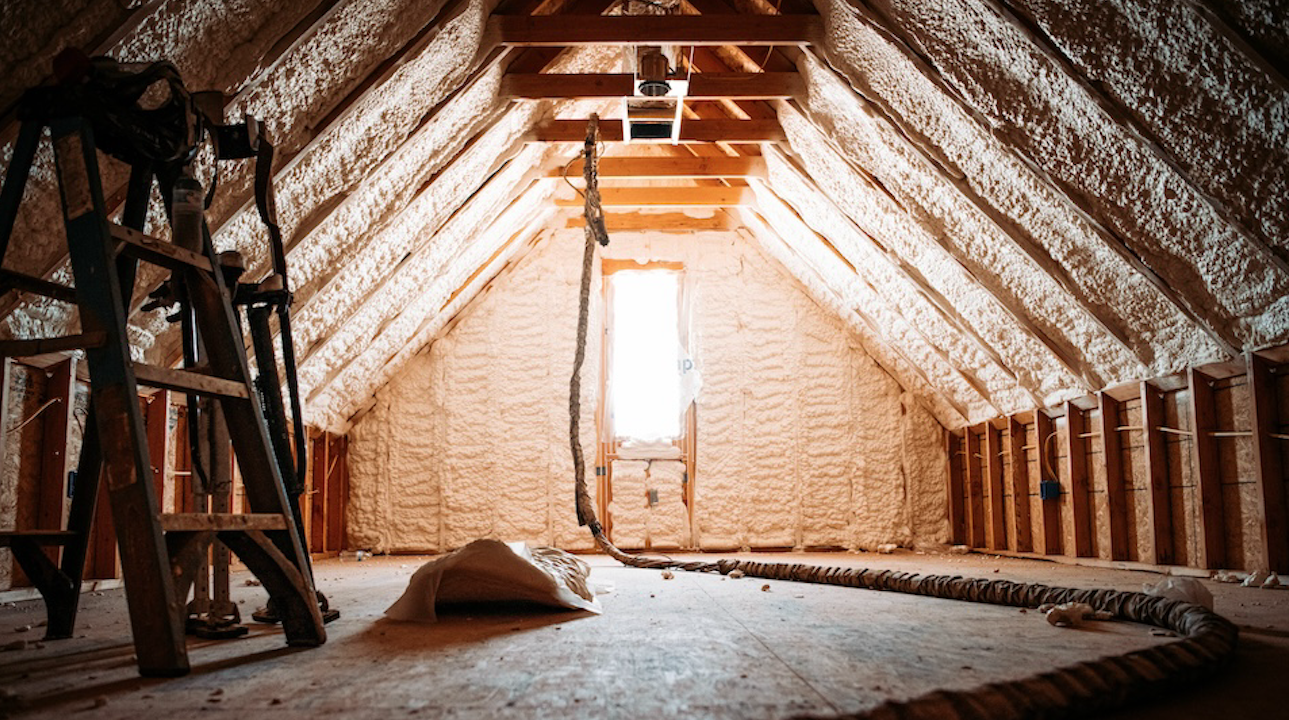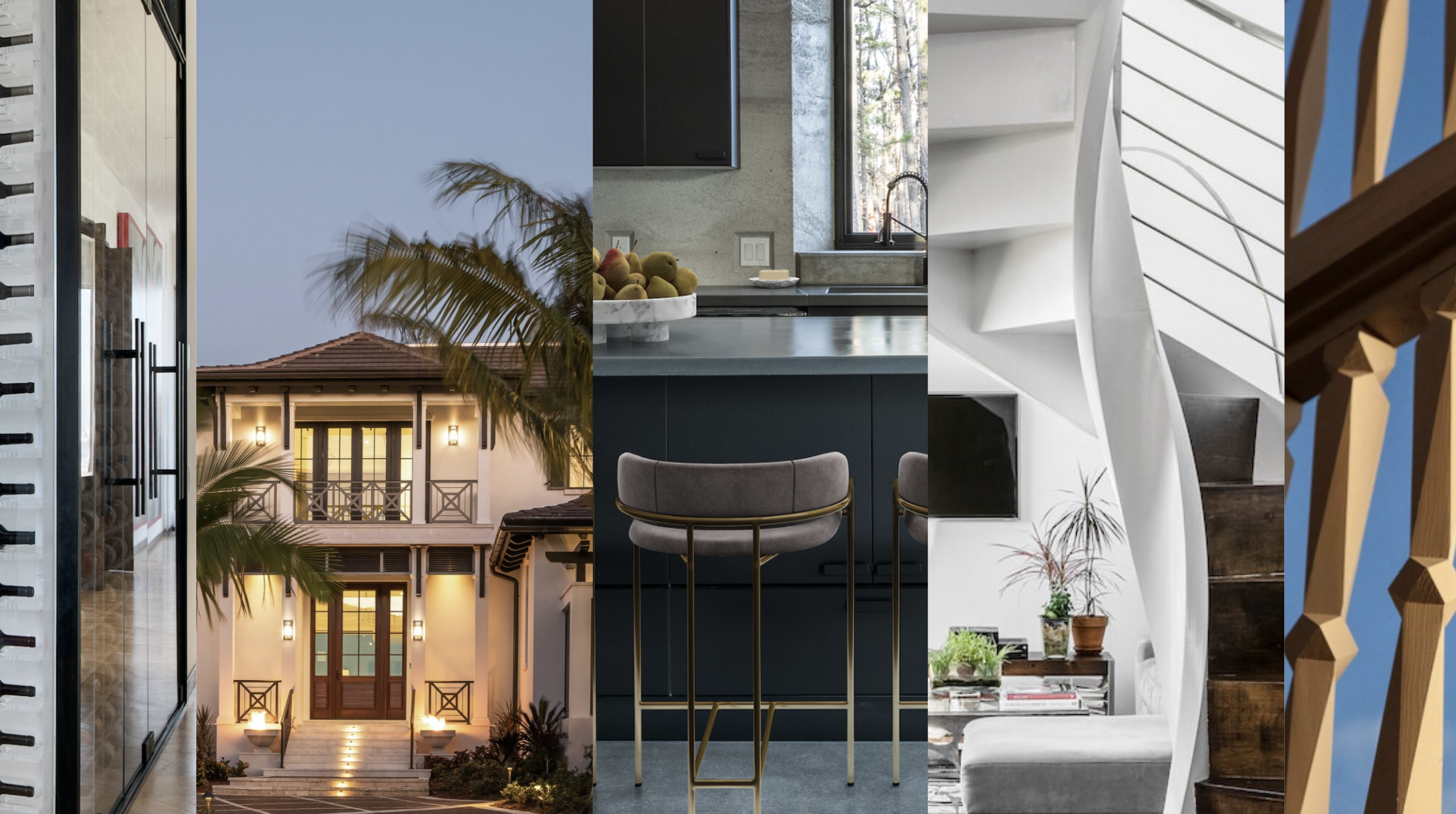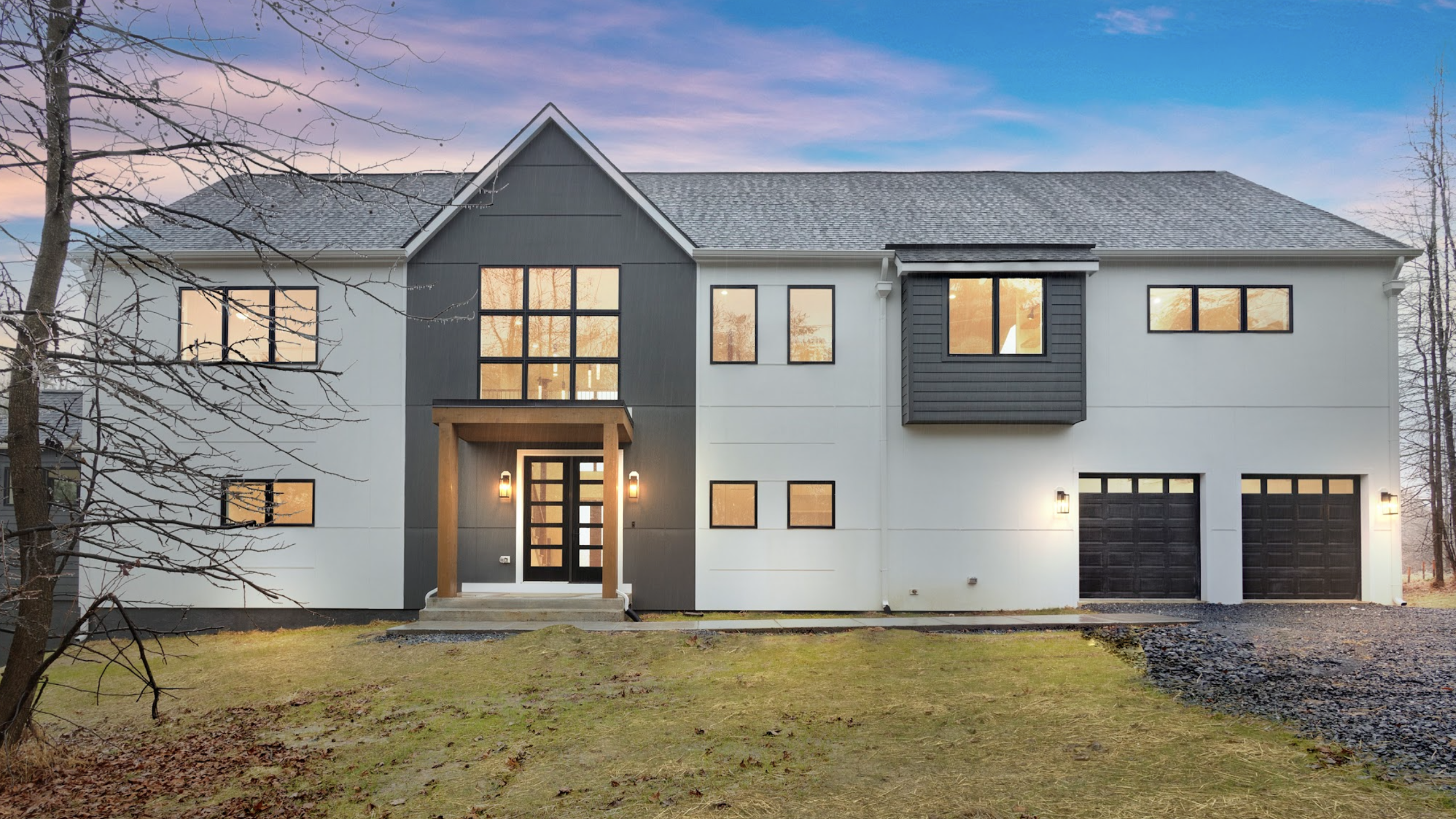It’s interesting to see which decisions people make about their housing situation when retirement is approaching. The Kolnowskis of Driftwood, Texas, live lightly on the land in a net-zero-energy house with views of vineyards and wildlife habitats. In New Jersey, another couple’s tear down-and-rebuild project resulted in a sleek split-level surrounded by mature trees.
Off the grid but close to town
One of the home’s signature design features is a stair tower that pushes a few feet above the roofline. It’s equipped with four operable clerestory awning windows. When the first-floor windows and sliding doors are opened in the evening, they work together with the tower windows to passively cool the home. Photos: Gary Russ
When Tom and Peggy Kolnowski first viewed the 7½-acre property in Texas Hill Country, they knew they’d come to the right place. “The setting, high up with a perfect view of the vineyards in the valley below, closed the deal for me; and I loved the privacy we would get,” Peggy says. “Yet we were less than 30 minutes from downtown Austin.” Part of the property is certified as a wildlife habitat.
Tom and Peggy recognized the site was ideal for a net-zero-energy home. They had been big believers in sustainability and recycling for years and, after attending Austin Energy’s “Green by Design” workshop, were convinced they could build green cost-effectively. Locally based Danze & Davis Architects and Native, a builder with a strong track record of building green and net-zero-energy houses, helped the Kolnowskis realize their dream.
The great room includes a 10-foot-long entertainment console homeowner Tom Kolnowski built from edge-joined solid oak planks. The oak was then stained with a black, zero-VOC, water-borne stain.
Architect Donovan Davis sited the home along an east-west axis, where it occupies less than an acre of the total site. Depending on where measurements are taken, the elevation change is approximately 60 to 90 feet. “That definitely added some cost to the project,” says Native project manager Jonathan Clow. “Also, it’s central Texas and there’s rock everywhere, so there’s no such thing as easy digging for things like underground utilities and the trenching for the potable rainwater collection system.”
The only water source, in fact, is the aforementioned rainwater harvesting system (there is no well). High-capacity gutters and downspouts collect rainwater from the metal roof surfaces on the home, walkway, and garage. PVC pipes mounted underground and under the deck route rainwater to a 30,000-gallon, above-ground metal storage tank. The rainwater is then treated in a three-stage filtration system before being pumped up to the house.
The home is a contemporary take on Texas Hill Country architecture. “It sits right at the tree canopy, so when you’re inside the living room looking out, it almost feels like a treehouse,” says builder Jonathan Clow. Banks of solar PV panels are visible from this angle.
Davis wanted to capture views and prevailing south/southwest breezes, which blow in from the valley about 90 percent of the time. ‘We also wanted to work the driveway, house, and garage in between three sizable live oak trees,” he says. The detached garage is connected to the home by a covered walkway.
Net-zero or green homes sometimes lack aesthetic appeal, but that isn’t the case here. The exterior is a contemporary homage to Texas Hill Country design vernacular, incorporating locally quarried limestone masonry, deep overhangs and porches, fiber-cement siding, and a metal roof.
A covered porch with deep roof overhangs wraps around the rear of the home, encompassing a screened porch off the dining room. The owners have 270-degree views of the Hill Country.
The main living areas—kitchen, great room, dining room, and screened porch—are open to one another and oriented to views and breezes. The master bedroom has a view to the northwest and access to a large covered deck that wraps around the rear.
“There are a lot of big roof overhangs as well as little roofs with brackets over exposed windows,” Davis says. Because the house is up off the hill rather than built into the hillside, “it sort of floats and does a better job of capturing breezes. That’s important, especially in the swing [seasons] here.”
The kitchen island has a custom bamboo countertop. Cabinets and built-ins are also made of bamboo.
A multipurpose room on the main floor has a pull-down bed and integrated desk/work area. Tom and Peggy’s son stays there when he’s home from college, and Peggy uses it as a craft and sewing room. Upstairs, two bedrooms and a full bath accommodate guests and the couple’s visiting daughter. Tom’s office is also on this floor.
The 3,117-square-foot home has a HERS Index Score of 7 and received an Austin Energy Green Building (AEGB) 5-star rating, the highest available from AEGB. Construction costs for the conditioned space were approximately $150 per square foot. Tom reports that in June 2014, the total utility cost was only $19.52.
New take on the split-level concept
The stucco and metal exterior and bluestone patio and walkways require little maintenance. The garage door is a combination of glass and aluminum and matches the commercial-style window above it and to the left. Photos: Ari Kleit Photography
Split-level homes are common in the northeastern United States. Typically the front entrance is somewhat higher than the garage level, and there are short flights of stairs between the main level, the bedroom level, and the basement.
When an empty-nester couple purchased a 1.15-acre lot in Princeton, N.J., there was a 1960s split-level on the site. Instead of demolishing it completely, the couple decided to tear it down to the foundation and work mostly within the existing footprint to create a new, 2,659-square-foot residence.
Architect Christina Loiacono was working for Wilkes Architects in Belle Mead, N.J., when the project came across her desk. She now has an architectural practice in Cary, N.C.
The great room receives morning sun through floor-to-ceiling windows. Stock windows in the great room and kitchen were assembled in a creative manner to bring the outdoors in; note the nine small windows in the dining nook.
“[The clients] bought the property knowing they would completely redesign [the home],” Loiacono says. “They liked the location and the lot because it was wooded and private.”
Mark Girsh of Girsh Development, Yardley, Pa., says his most significant challenge was to make sure the brook was protected while demolition and construction was in progress. “We decided to go above and beyond the required protection,” Girsh says. “On a standard large lot we would ordinarily use large equipment and complete demolition and cleanup within three days. Given this property’s unique circumstances, we determined that it would be best to perform the demolition by hand.”
The new home is nestled in the woods on a lot that’s a little over one acre. “There’s a natural brook flowing directly behind the site, which is surrounded by a mix of undeveloped land and homes on larger lots,” says builder Mark Girsh. “The setting is extremely quiet and peaceful.”
The crew used a small backhoe to assist with bringing down the debris, but the actual demolition was done with saws and sledgehammers over the course of eight days. “This method provided us with the utmost level of control over the spread of debris into the brook,” he says.
Loiacono notes, “We had to get a variance because 95 percent of the existing living area was located outside of the building setback line, making it closer to the neighboring house behind it.”
An open-riser staircase allows sunlight to pour into the home. The risers have 3-inch-thick maple treads. The horizontal railing is stainless steel and was fabricated by a metal artist.
The foundation was expanded to accommodate the new residence, which is open and contemporary with plenty of natural light. There are five levels, each accessed by a short flight of stairs. The basement is used primarily for mechanical and storage needs. The ground floor encompasses a garage, mudroom, family room, guest bedroom, bathroom, and home office. Above that are the foyer, great room, and kitchen. The master suite and a secondary bedroom and bath are a few steps up from this floor. Topping it all off is a roof deck.
The roof deck allows the homeowners to enjoy their property more and drive less. The deck is twice the size of the original home’s usable roof area.
Getting around the home is not as difficult as it sounds. “The split levels make getting from one floor to the other much easier,” Girsh says, pointing out that the bedroom and bath on the garage level can accommodate a person with constrained mobility.
How to Live Off the Grid
A highly efficient, hybrid electric heat pump hot-water heater minimizes energy consumption for water heating. “We had to acoustically soundproof the mechanical room because the water heater is so noisy,” says builder Jonathan Clow. “I tell Tom it’s the sound of him saving money.”
These features of Tom and Peggy Kolnowski’s new home greatly reduce their dependence on utility providers:
• A rainwater harvesting system takes care of all household water needs. A Bluetooth-enabled monitor inside the home shows, at a glance, the level in the rainwater collection tank. “Each inch of rainfall results in approximately 2,900 gallons of catchment,” Tom says. “During the so-called multi-year drought condition in Texas, the collection tank is typically 95-to-100 percent full.”
• A ground-source geothermal heat pump in the mechanical room satisfies all heating and cooling needs. During construction, four 300-foot-deep geothermal wells were drilled and closed-loop tubing was installed.
• Three banks of solar photovoltaic panels on the south and west roof faces produce a rated 7.75 kilowatts. The panels are integrated with an Internet-enabled management console and alert system. The Kolnowskis automatically receive credits for any power they return to the grid.
Consider the Alternatives
Instead of custom-made, wenge wood cabinets, builder Mark Girsh purchased stock cabinets with a chocolate cherry finish that are much less expensive but still have the desired look and quality.
Mark Girsh believes that custom builders and their clients should always consider the alternatives before making a final decision. Sometimes value engineering makes sense.
For example, while studying the floor plan of the existing home on the New Jersey property featured in this article, he noticed there was a partial roof deck with a floor area of approximately 315 square feet. Adjacent to that was roof space with approximately 273 square feet, which had been designated unusable due to the cost constraints of finishing it as a deck. Girsh convinced the clients that the added cost to turn it into usable space—nearly doubling the roof deck in size—would be negligible. CB
